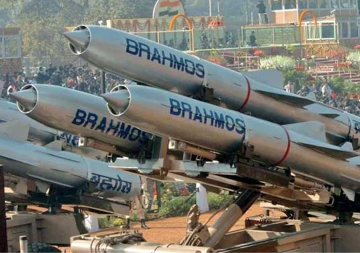
Since its outbreak in 1989, the conflict in Kashmir has survived by adopting or dubbing ideas and tactics from the events elsewhere. Conflicts in today’s globalised and digitalised world often feed on new ideas as monotonous strategies and tactics are easy targets for counterinsurgencies and conflict fatigue. Thus, non-state actors and agents of conflicts often implement and introduce novel tactics and ideas to cope with the changes and keep their movements alive, and the conflict in Kashmir is no exemption to it.
When the conflict in Kashmir erupted in 1989, it drew its inspiration from several international factors. The rise of global Islamism and the fall of communism played a pivotal role in this. In his book
Kashmir: Roots of Conflict, Path to Peace, Sumantra Bose
highlights that the success of the Islamic revolution in Iran, the first Palestinian intifada, the victory of Afghan Mujahideen against the much superior Soviet Union, and the fall of communist regimes all across the world glamorised ideas of self-determination, armed revolution, and mass mobilisation amongst the Kashmiris. This led to the rise of the Azadi phase where the Kashmiris used Islam as a
rationale to mass mobilise and instill secessionist tendencies against India. Inspired by the events in Afghanistan, these secessionists rambled around the valley and urban areas with Kalashnikovs, targeting security forces, and minorities, and called themselves Mujahideen.
The rise of global Islamism and the fall of communism played a pivotal role in this.
Soon after by 1992–1993, the Hizbul Mujahideen (HM) started entrenching its foot in the valley. A fraction of these Hizbul fighters were believed to have had some combat
experience in Afghanistan, and the HM had thus borrowed its military tactics from the former. Inspired by the Mujahideen’s practices, they intended to increase Kashmir’s economic, military, and political costs for India, by harassing and attempting to stalemate the security forces through hit-and-run strategies. Consequently, they minimised confrontation against the security forces and operated from rural hideouts. They enhanced their recruitment and mobilisation by calling upon the Kashmiris for a “Jihad” against India. This tactic of intertwining armed revolution with religion was similar to the Mujahideen’s practices, and also a product of Jamaat-e-Islami Kashmir’s (HM’s parent organisation) ideas of Islamism and merger with Pakistan.
However, by 1999 a new phase of
Fidayeens came into existence. These Fidayeen attacks were carried by organisations such as Lashkar-e-Taiba (LeT) and Jaish-e-Mohammed (JeM), where a squad of 2–4 militants would undertake suicidal missions and target key government or military buildings and infrastructure. Following this, they would either escape or fight till death. These attackers were
familiar with guerrilla warfare, ambush, and survival techniques. They had adopted these tactics while
training and fighting alongside the Afghani Mujahideens and Taliban, who defeated the Soviet army
vis-à-vis bomb blasting, ambushing, guerrilla warfare, and attacking the army and governments’ strongpoints. This phase also witnessed the beginning of the handful of cases of suicide bombings in Kashmir, which drew its
inspiration from the success of the Liberation Tigers of Tamil Eelam (LTTE) bombings.
Posts and posters on encrypted channels and Facebook became a ground for anti-Indian propaganda and narratives.
But by 2008, the separatist/secessionist section of Kashmiris had adopted stone-pelting as a popular tactic to express dissent and unhappiness with India. This phenomenon mainstreamed in 2008, and gained popular support by 2010 with the advocacy of
separatists such as Syed Ali Shah Geelani and Masrat Alam. This tactic drew its
inspirations from the first and second Palestinian intifada, where stone-pelting became an image of dissent and anger. Besides, this tactic became handy to checkmate the security personnel with spontaneous and easy coordinated incidents, while the state forces were ordered to practice maximum restraint (starting from
2010) against these “unarmed protestors.” Although stone-pelting contributed to mutual damage, it significantly harmed the outnumbered security forces of the region. For instance, the 2008 unrest contributed to a total of
1,200 injuries, while the 2010 and 2016
unrests (with intensified stone-pelting), solely contributed to over 5,100 and 8,300 injured security personnel each. The impact of it was so gruesome that the number of security personnel being retired hurt
spiked significantly from 2013–2016.
This phase was further accompanied by a phase of home-grown militancy. By the year, 2014 ISIS began
using encrypted platforms such as Telegram and WhatsApp, and professional videos and posters to humanise terrorists, and demoralise and
degrade the state and its military units. It targeted youngsters and pulled several thousands of them towards terrorism and jihad. Witnessing this success, several militant organisations such as HM, LeT, JeM, and Ansar Ghazwat-ul-Hind began adopting similar tactics, to attract the Kashmiri youth towards militancy. Posts and posters on encrypted channels and Facebook became a ground for anti-Indian propaganda and narratives. They equated slain militants to “martyrs” and indulged with the public extensively. They, thus,
started announcing new recruitments, their details, and ongoing militant activities too. They also humanised terrorists by portraying them with normal and responsible images. Militants, from the
HM, for instance, were shown playing cricket, eating, delivering speeches
, and also
punishing alleged Indian informers and criminals. This tactic was so ingrained that
by 2017, the security establishment had noted a minimum of
65,000 Twitter handles and
thousands of Facebook pages being dedicated to propagate anti-Indian sentiments. Consequently, the local militancy
rose from 16 recruits per year in 2013 to 218 by 2018.
Although stone-pelting contributed to mutual damage, it significantly harmed the outnumbered security forces of the region.
Beginning from 5 August 2019, this phase, however, underwent some disruption. While, the year 2020 witnessed the reduction in the number of stone-pelting incidents by
87 percent; the year 2019 — with over
139 recruits, became the only year to witness a decline in local recruitments, starting from
2013. The trend, however, relapsed, as the recruits increased to
150 by November 2020
. Also, the prevalence of militant activities, and new “secularly framed” proxies of Pakistan such as The Resistance Front (TRF), Kashmir Tigers, and People’s Anti-Fascist Front, and their similar yet adopted and intensified social media
propaganda indicates that the conflict is set to continue, and it is yet to revive itself by borrowing new ideas and tactics.
These new ideas and tactics can largely be expected to originate from the Taliban and the civil unrest in Afghanistan. The US’s withdrawal from Afghanistan and the Taliban’s intragovernmental talks have been perceived as a watershed moment for several Islamic and militant organisations. It has reignited the hopes of ethnic/religious nationalism, pan-Islamism, jihad, and gun violence. Thus, instigating hopes and boosting the morale of several militant organisations and their cadres operating in Kashmir and closely associated with the Taliban. Consequently, terrorist organisations such as
Jaish-e-Muhammad and
Al-Qaeda (Ansar Ghazwat-ul-Hind) have declared the Taliban’s victory as a shining example of how jihad and militancy will serve the Kashmiri cause. This has also led several cadres to draw inspiration from these events, as seen with
Adil Ahmed Dar — a local Kashmiri, responsible for the Pulwama attack.
Instigating hopes and boosting the morale of several militant organisations and their cadres operating in Kashmir and closely associated with the Taliban.
Besides, the Taliban’s victory in Afghanistan has created a demand for its militant and terror tactics. Its
tactical use of improvised explosive devices (IEDs), bombings, technical innovations, social media, guerrilla attacks, and
infiltration into the army bases against the much superior North Atlantic Treaty Organisation (NATO) forces could grab the attention of several militant organisations. A lot of these tactics can, thus, be expected to be imported into Kashmir, as most of these militant organisations work in a close synergy under Pakistan’s management.
For instance, some tactics and weapons restricted to Afghanistan are now visible in Kashmir. Security officials have now expressed concerns about
the increasing usage of IEDs in the region. Similarly, the sticky bombs that were used by the Taliban were recently
discovered in a TRF militant hideout. The Taliban’s tactics of using
Pakistani drones to spy or drop bombs are now being adopted in Kashmir, where Pakistani drones are being used to
spy or
drop weapons for the terror outfits. Finally, with an
increasing number of smartphone users in Kashmir, and the recent restoration of the 4G services, there is a high probability that the Taliban’s stories of Jihad, technical innovations, suicidal missions, and ambushes, will be glorified amongst the locals.
India cannot risk turning a blind eye towards the inflow of ideas and tactics from Afghanistan.
Although India’s anti-infiltration grid, security deployment, intelligence capabilities, and strong state presence will prevent these tactics from changing Kashmir’s status quo, this phase is likely to get bloodier and brutal, as the Taliban factor will continue to contribute to further militancy, radicalisation, and the replication of the tactics. Thus, exacerbating the conflict.
The conflict in Kashmir has undergone several changes and has kept itself relevant by drawing upon ideas and tactics from elsewhere. In this case, the Afghan peace process has only provided new rigour and energy into the conflict. Although India’s
entry into the Afghanistan great game has provided huge leverage for the Indian security and diplomatic community, India cannot risk turning a blind eye towards the inflow of ideas and tactics from Afghanistan, and must be equipped to deter and counter these new tactics.
The author is a research intern at Observer Research Foundation.
The views expressed above belong to the author(s). ORF research and analyses now available on Telegram! Click here to access our curated content — blogs, longforms and interviews.



 Since its outbreak in 1989, the conflict in Kashmir has survived by adopting or dubbing ideas and tactics from the events elsewhere. Conflicts in today’s globalised and digitalised world often feed on new ideas as monotonous strategies and tactics are easy targets for counterinsurgencies and conflict fatigue. Thus, non-state actors and agents of conflicts often implement and introduce novel tactics and ideas to cope with the changes and keep their movements alive, and the conflict in Kashmir is no exemption to it.
When the conflict in Kashmir erupted in 1989, it drew its inspiration from several international factors. The rise of global Islamism and the fall of communism played a pivotal role in this. In his book Kashmir: Roots of Conflict, Path to Peace, Sumantra Bose
Since its outbreak in 1989, the conflict in Kashmir has survived by adopting or dubbing ideas and tactics from the events elsewhere. Conflicts in today’s globalised and digitalised world often feed on new ideas as monotonous strategies and tactics are easy targets for counterinsurgencies and conflict fatigue. Thus, non-state actors and agents of conflicts often implement and introduce novel tactics and ideas to cope with the changes and keep their movements alive, and the conflict in Kashmir is no exemption to it.
When the conflict in Kashmir erupted in 1989, it drew its inspiration from several international factors. The rise of global Islamism and the fall of communism played a pivotal role in this. In his book Kashmir: Roots of Conflict, Path to Peace, Sumantra Bose  PREV
PREV

